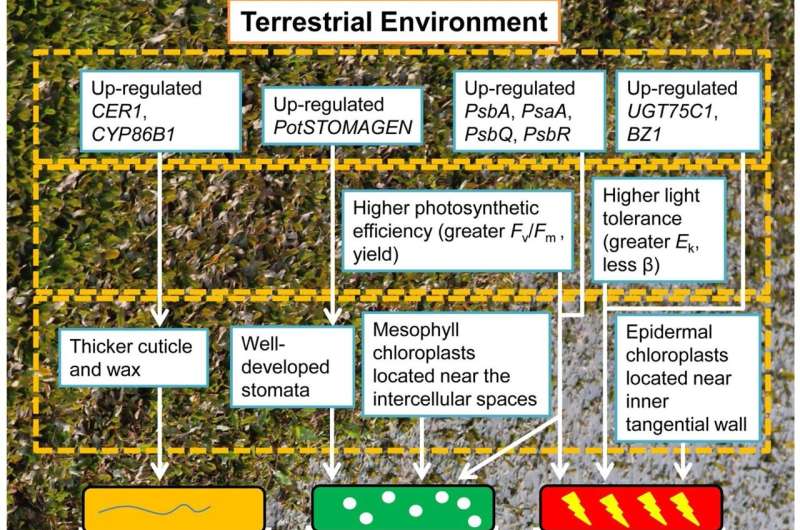What enables freshwater plants to live in both aquatic and terrestrial environments?

Wetlands are particularly sensitive to hydrological changes, such as the reduction in water supply during extensive droughts. In response to a reduction of water levels, many aquatic plants can become amphibious, producing morphologically, structurally and physiologically different emergent growth forms.
Potamogeton wrightii morong is a heterophyllous plant, which grows primarily in freshwater and sometimes on land by producing terrestrial shoots. During summer, plants of P. wrightii growing in shallow water at lake margins often become immersed and produce a new set of terrestrial leaves in the aerial environment and grow well as a land plant for a few weeks.
Researchers from the Wuhan Botanical Garden of the Chinese Academy of Sciences (CAS) comprehensively investigated morphological structure, physiological functions and molecular regulation in P. wrightii to reveal the underlying adaptive mechanism of photosynthetic metabolism to aquatic and terrestrial environments.
Results showed that in terrestrial habitats, the aerial P. wrightii leaves were thicker with larger amounts of cutin and wax, and developed stomata, greater tolerance to strong light, and a greater photochemical efficiency. In an aquatic environment, the submerged leaves had a greater ability to use HCO3- and to synthesize photosynthetic pigments.
In addition, the transcriptome research revealed that P. wrightii adapted to aquatic and terrestrial environments by regulating leaf morphyology and anatomical structure and adjusting photosystems through the up/down-regulation of genes related to cutin and wax biosynthesis and photosystems I (PSI) and PSII, as well as outer light-harvesting chlorophyll protein complexes.
This study provides new insights on the capacity of aquatic plants to survive fluctuating water levels, which could be attributed to their genotypes resulting from their evolution from land plants and their phenotypic plasticity.
More information: Shijuan Han et al, Biological adaptive mechanisms displayed by a freshwater plant to live in aquatic and terrestrial environments, Environmental and Experimental Botany (2021). DOI: 10.1016/j.envexpbot.2021.104623
Provided by Chinese Academy of Sciences





















